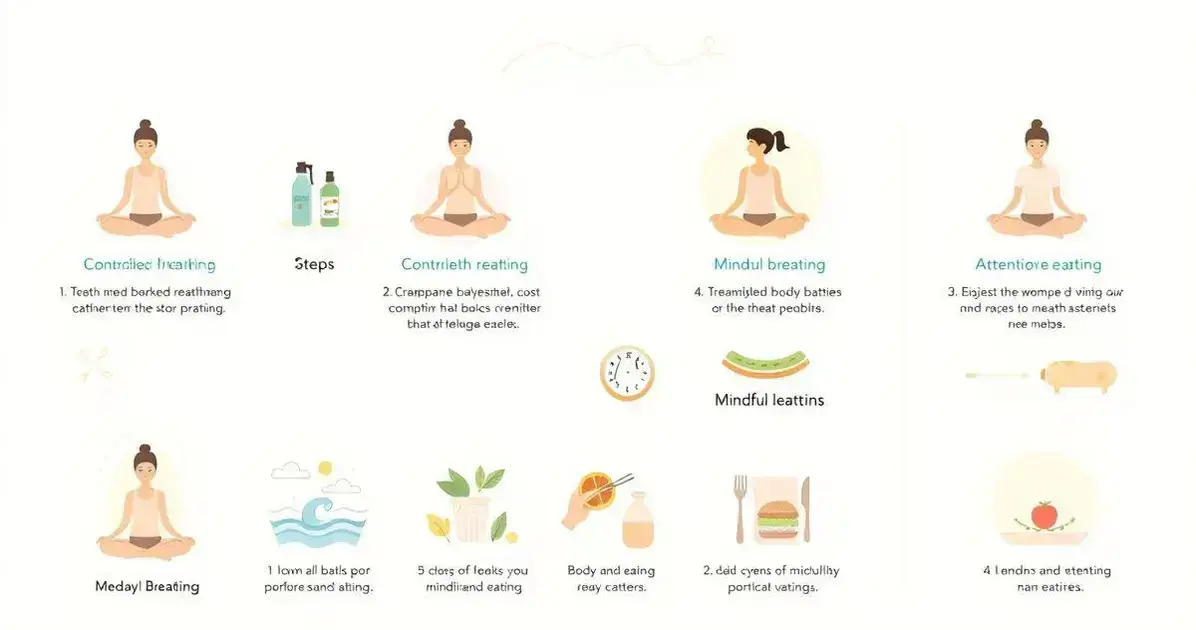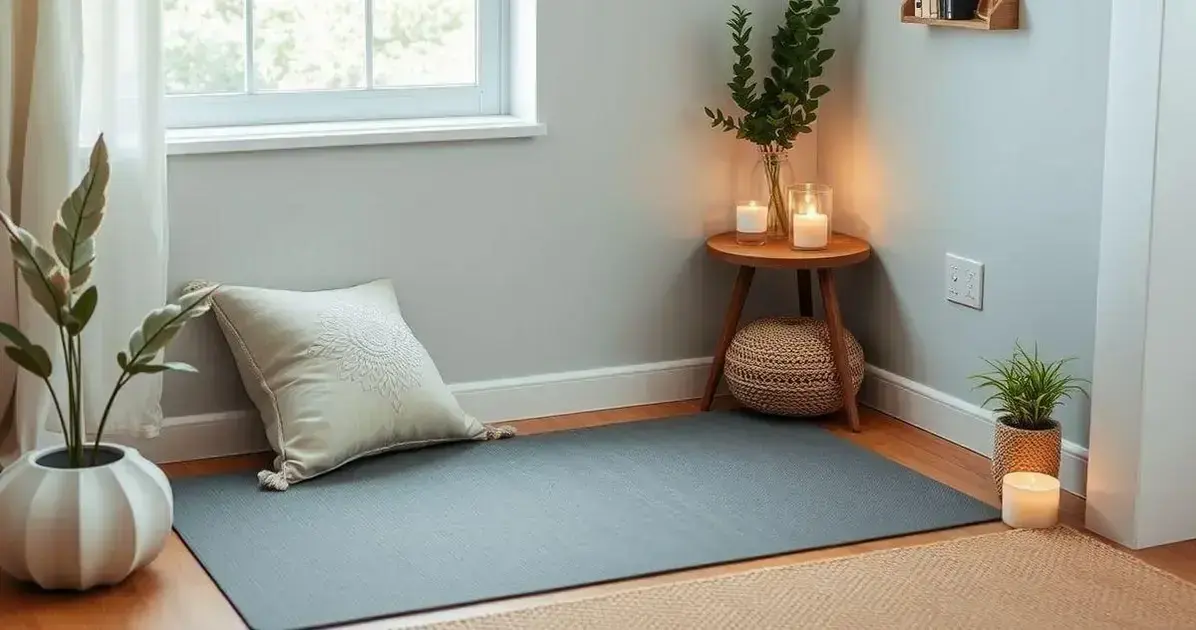Mindful Habits for Busy People: Transform Your Life with Simple Practices
In today’s fast-paced world, practicing mindful habits for busy people has never been more essential.
Finding time to pause and reflect can dramatically enhance our mental clarity and emotional resilience.
This article will delve into practical strategies to incorporate mindfulness into your daily routine, ensuring that even the busiest individuals can embrace these transformative practices.
Understanding Mindfulness
Understanding mindfulness is the first step toward incorporating it into your daily routine. Mindfulness is the practice of being present in the moment, fully engaged with your surroundings, thoughts, and feelings. It encourages you to notice what is happening without rushing or forcing outcomes.
This practice is essential for busy people. In our fast-paced lives, many individuals juggle multiple responsibilities, often leading to stress and fatigue. By developing a mindfulness practice, you can create mental space to process your experiences and emotions.
Components of Mindfulness
There are key components that contribute to mindfulness:
- Awareness: Being aware of your thoughts and feelings as they arise.
- Acceptance: Accepting experiences without judgment or the need to change them.
- Non-reactivity: Responding thoughtfully rather than reacting emotionally to situations.
Mindfulness can take many forms, such as meditation, breathing exercises, or simply paying attention to your surroundings. It is about tuning into yourself and the moment without distractions.
Mindfulness vs. Multitasking
Many busy people believe they must multitask to be productive. However, mindfulness teaches us the opposite. Focusing fully on one task at a time can lead to higher quality work and a greater sense of accomplishment. This shift in perspective can help you manage your time more effectively and reduce feelings of overwhelm.
Practicing mindfulness allows you to connect more deeply with yourself and your environment. Whether you are at work or home, being mindful can help you respond to challenges with clarity and purpose. Mindfulness is not just a practice but a way of life that promotes health, happiness, and well-being.
Benefits of Mindful Habits
The benefits of mindful habits extend far beyond just relaxation. When busy people incorporate mindfulness into their daily lives, they experience significant improvements in both mental and physical well-being.
1. Reduces Stress
One of the most immediate benefits of practicing mindfulness is its ability to lower stress levels. By taking a moment to breathe and refocus, you can remove yourself from overwhelming situations. This practice helps you feel calmer and more in control.
2. Enhances Focus
Mindful habits improve concentration. When you practice being present, you train your brain to focus better on one task at a time. This can lead to higher productivity, especially for busy individuals juggling multiple responsibilities.
3. Improves Emotional Health
Regular mindfulness practice can enhance emotional well-being. It helps with managing anxiety and depression, allowing you to respond to challenges more effectively. A greater sense of self-awareness can lead to healthier responses to stressors.
4. Fosters Better Relationships
When you practice mindfulness, you become more empathetic and understanding in your interactions. This leads to improved relationships, whether it’s with family, friends, or colleagues. Being present allows for deeper connections and better communication.
5. Promotes Physical Health
Mindfulness has been linked to various health benefits, such as lower blood pressure, improved sleep, and a stronger immune system. By reducing stress, you also reduce the impact of stress-related illnesses.
6. Encourages Healthy Habits
Creating mindful habits can lead to a healthier lifestyle. When you are mindful of your choices, you tend to make better decisions regarding nutrition and exercise. This awareness encourages long-term lifestyle changes rather than quick fixes.
Incorporating mindful habits into your daily routine can be transformative. By understanding and embracing these benefits, busy people can not only enhance their day-to-day lives but also cultivate a more balanced and fulfilling existence.
Simple Mindful Techniques

Simple mindful techniques can make a big difference in your everyday life. They help integrate mindfulness into your busy schedule without requiring a lot of time or effort. Here are some easy methods you can try:
1. Mindful Breathing
Take a few minutes to focus on your breath. Inhale deeply through your nose, hold it for a moment, and then exhale slowly through your mouth. This helps center your thoughts and reduce stress.
2. Body Scan
Find a quiet space to lie down or sit comfortably. Close your eyes and mentally scan your body from head to toe. Notice any areas of tension and consciously relax them. This technique promotes relaxation and body awareness.
3. Five Senses Exercise
Take a moment to notice your surroundings by engaging your five senses. Identify:
- Five things you can see,
- Four things you can touch,
- Three things you can hear,
- Two things you can smell,
- One thing you can taste.
This mindful practice helps ground you in the present moment.
4. Mindful Walking
When you walk, pay attention to the sensations in your feet and legs. Notice how your body moves with each step. Walking mindfully can help clear your mind and improve focus.
5. Gratitude Journaling
Each day, write down three things you are grateful for. This simple practice shifts your focus from what’s lacking to appreciating what you have, enhancing overall positivity.
6. Mindful Eating
During meals, slow down and savor each bite. Pay attention to the taste, texture, and smell of your food. This nourishes both your body and mind, making eating a more enjoyable experience.
7. Daily Reflection
At the end of each day, take a few moments to reflect on your experiences. Consider what went well, what you learned, and how you felt. This helps you connect with your thoughts and emotions and promotes a sense of closure.
Integrating these simple mindful techniques into your daily routine can significantly enhance your overall well-being and help manage the challenges of a busy life.
Integrating Mindfulness into a Busy Schedule
Integrating mindfulness into a busy schedule can feel challenging, but it is entirely possible with intentional planning. Here are several strategies to help you make mindfulness part of your everyday life, even when you’re short on time.
1. Start Small
Begin with just a few minutes of mindfulness each day. This could be as simple as taking a minute to focus on your breath or practicing gratitude while waiting for your coffee. Small practices can create lasting habits.
2. Use Transition Times
Take advantage of transition times in your day. For example, use your commute to practice mindful breathing or listen to a guided meditation. These brief moments can become powerful opportunities for mindfulness.
3. Incorporate Mindfulness into Daily Tasks
Turn everyday activities into mindfulness practices. While washing dishes, focus on the sensations of the water and the soap. During a shower, pay attention to the feeling of water on your skin. This helps you engage with the present moment.
4. Schedule Mindfulness Breaks
Set aside specific times in your calendar for mindfulness breaks. Even five minutes of stretching or a short walk can boost your mental clarity and energy levels. Treat these breaks as important meetings with yourself.
5. Practice Mindful Listening
When talking with others, practice fully listening to what they are saying. Avoid distractions like your phone. This helps you connect with others and stay present, enhancing your communication and relationships.
6. End Your Day Reflectively
Before going to bed, take a few moments for reflection. Think about the day and identify moments of gratitude or challenges you faced. This helps you unwind and fosters a mindful mindset as you sleep.
7. Engage in Mindful Movement
Incorporate mindfulness into your exercise routine. Whether it’s yoga, walking, or running, focus on your body’s movements and your breath. This not only improves your physical health but also helps clear your mind.
By intentionally integrating these mindfulness strategies into your busy schedule, you can cultivate a more present and balanced life. Remember, the goal is not perfection but progress toward a mindful lifestyle.
Mindful Eating for Busy Lives
Mindful eating for busy lives is about being present during meals, even when time is limited. Implementing mindful eating allows you to enjoy your food more fully and build healthier eating habits. Here are some strategies to practice mindful eating amidst a hectic schedule:
1. Slow Down
Take your time to chew your food well. Slow down by putting your fork down between bites. This helps you enjoy the flavors and can lead to better digestion.
2. Eliminate Distractions
Try to eat without distractions like your phone, TV, or computer. Focus on your meal and the experience of eating. This practice can deepen your appreciation for your food and help you recognize when you are full.
3. Portion Control
Before eating, serve your food on a plate instead of eating directly from containers. This encourages mindful portions, helping prevent overeating. Pay attention to how much you are consuming by visualizing appropriate serving sizes.
4. Taste Each Bite
Be aware of the textures and flavors of your food. Notice the sweetness, saltiness, and any spices. This focus can enhance your eating experience and make meals more enjoyable.
5. Check in with Your Body
As you eat, periodically check in with your hunger and fullness cues. Ask yourself if you are still hungry or if you are eating out of habit or stress. This can help you make conscious choices about when to stop eating.
6. Mindful Snacking
Choose healthy snacks and take a moment to savor them. For example, when eating fruit, appreciate its color, smell, and taste. This approach can transform snacking into a more satisfying experience.
7. Plan Your Meals
Meal planning can help you stay mindful of what you eat throughout the week. Take some time to prepare healthy options, ensuring you have nutritious meals ready even during your busiest days.
By integrating these mindful eating practices into your life, you can cultivate a healthier relationship with food, even when you are busy. This leads not only to better physical health but also improves your mental well-being.
Creating a Mindfulness Routine

Creating a mindfulness routine can be easy and rewarding, even for busy people. A structured routine helps you integrate mindfulness into your day. Here are several steps to help you establish a routine that works for you:
1. Set Clear Intentions
Start by defining your goals for mindfulness. Consider why you want to practice mindfulness and what you hope to achieve. This could include reducing stress, improving focus, or enhancing well-being.
2. Choose a Regular Time
Pick a consistent time each day for your mindfulness practice. Whether it is in the morning, during lunch, or before bed, consistency helps reinforce the habit. Stick to your chosen time, as it will become a natural part of your daily routine.
3. Start with Short Sessions
Begin with just a few minutes of mindfulness each day. Even five minutes can be beneficial. Gradually increase the time as you feel more comfortable. The key is to start small and build over time.
4. Create a Dedicated Space
Designate a quiet and comfortable spot for your mindfulness practice. This could be a corner of your bedroom, a cozy chair, or even a small outdoor area. Having a specific space helps signal your mind that it is time to focus.
5. Use Guided Practices
Consider using guided meditations or mindfulness apps to help you get started. These resources can provide structure and support as you learn new techniques. Many are designed for busy individuals and offer quick practices.
6. Incorporate Mindfulness into Daily Activities
Make mindfulness a part of everyday tasks. Practice mindful walking, eating, or even brushing your teeth. These moments can serve as a reminder to pause and be present without needing extra time.
7. Reflect on Your Progress
At the end of each week, take a moment to reflect on your mindfulness practice. Consider what worked well and what didn’t. Adjust your routine as needed to ensure it remains enjoyable and effective.
By establishing a mindfulness routine, you can create a peaceful anchor in your busy life. This practice not only improves your overall well-being but also enhances your ability to manage daily challenges with clarity and calm.
Overcoming Challenges in Mindful Living
Overcoming challenges in mindful living is crucial for maintaining a consistent practice, especially for busy individuals. Here are some common obstacles you might face and strategies to overcome them:
1. Time Constraints
One of the biggest challenges is finding time for mindfulness. To combat this, schedule short sessions throughout your day. Even five minutes of focused breathing can be effective. Use transition times, such as waiting for coffee, to practice mindfulness.
2. Distractions
In a world filled with distractions, staying focused can be tough. Create a dedicated space for your mindfulness practice without interruptions. Turn off notifications on your devices and communicate your needs to those around you to minimize distractions.
3. Skepticism
Some may doubt the effectiveness of mindfulness. Start slowly and keep an open mind. Experiment with different practices to find what resonates with you. Journaling about your experiences can also help track positive changes.
4. Fluctuating Motivation
It is natural for motivation to ebb and flow. To stay engaged, mix up your mindfulness activities. Try new techniques, join a group, or listen to guided meditations. Keeping your practice fresh can reignite your enthusiasm.
5. Restlessness
Feeling restless or impatient during mindfulness practice is common. When this happens, acknowledge your feelings without judgment. Gently redirect your focus back to your breath or the task at hand. It’s okay to experience restlessness as part of the process.
6. Perfectionism
Some people feel they must practice mindfulness perfectly. Remember, it’s about progress, not perfection. Allow yourself to have off days and avoid self-criticism. Mindfulness is a journey, so embrace the learning experience.
7. Emotional Challenges
Mindfulness may bring up difficult emotions or memories. If this happens, approach them with compassion and curiosity rather than avoidance. Consider seeking support from a professional if you feel overwhelmed.
By anticipating these challenges and developing strategies to address them, you can foster a more sustainable and fulfilling mindfulness practice. Mindful living can become an enriching part of your busy life.
FAQ – Frequently Asked Questions about Mindful Habits for Busy People
What is mindfulness?
Mindfulness is the practice of being present in the moment and fully engaging with your thoughts, feelings, and surroundings without judgment.
How can I integrate mindfulness into my busy schedule?
You can integrate mindfulness by scheduling short practice sessions, using transition times for mindfulness activities, and incorporating mindfulness into daily tasks.
What are some simple mindful techniques I can use?
Some simple techniques include mindful breathing, body scanning, engaging your five senses, and practicing mindful eating during meals.
Why is mindful eating important?
Mindful eating helps improve your relationship with food, encourages better digestion, and promotes healthier choices without distractions.
What challenges might I face in mindful living?
Common challenges include time constraints, distractions, fluctuating motivation, skepticism, and emotional difficulties. Acknowledging these can help you find strategies to overcome them.
How can I create a mindfulness routine?
To create a mindfulness routine, set clear intentions, choose a regular time, start with short sessions, and reflect on your progress weekly.
